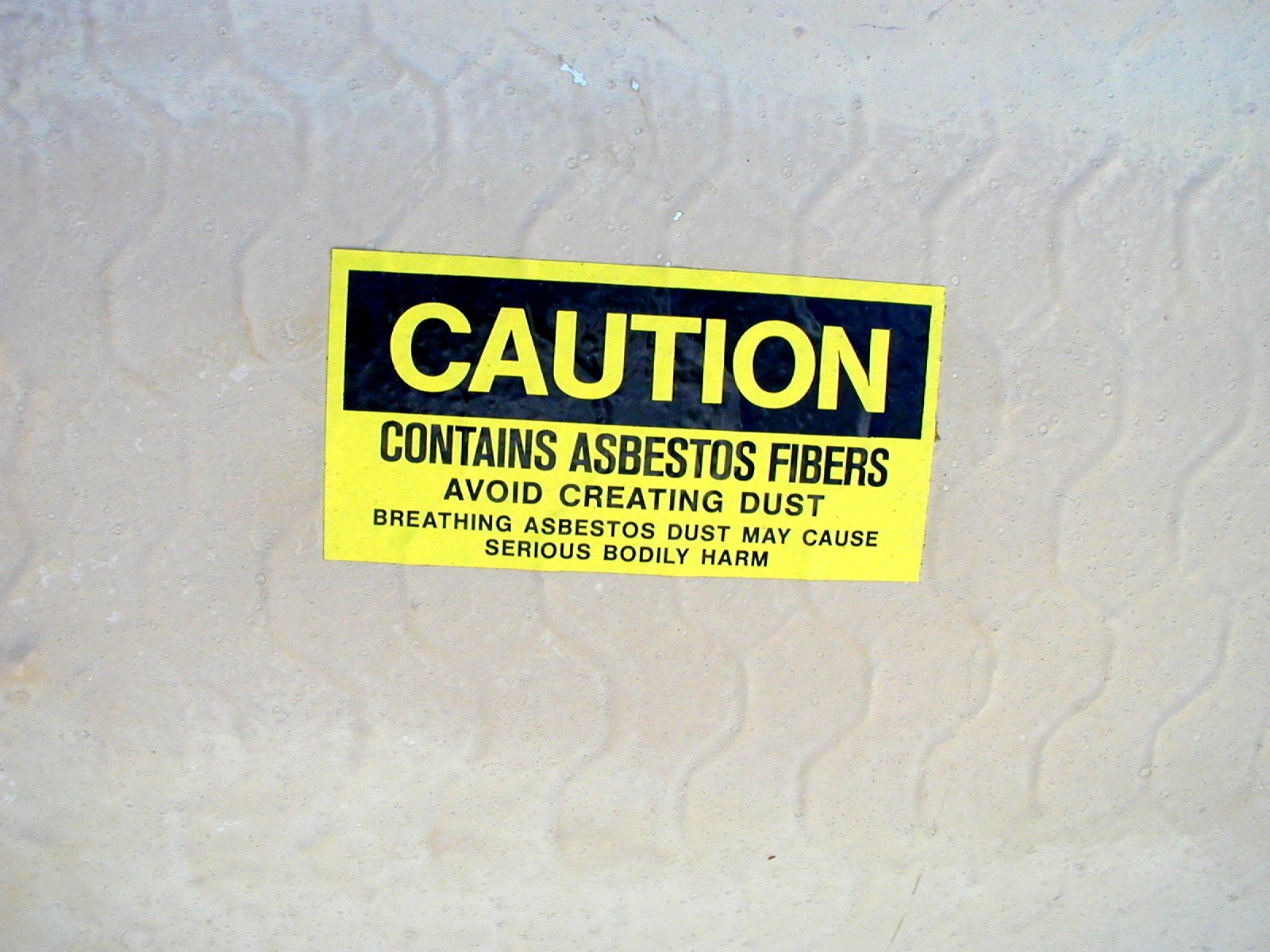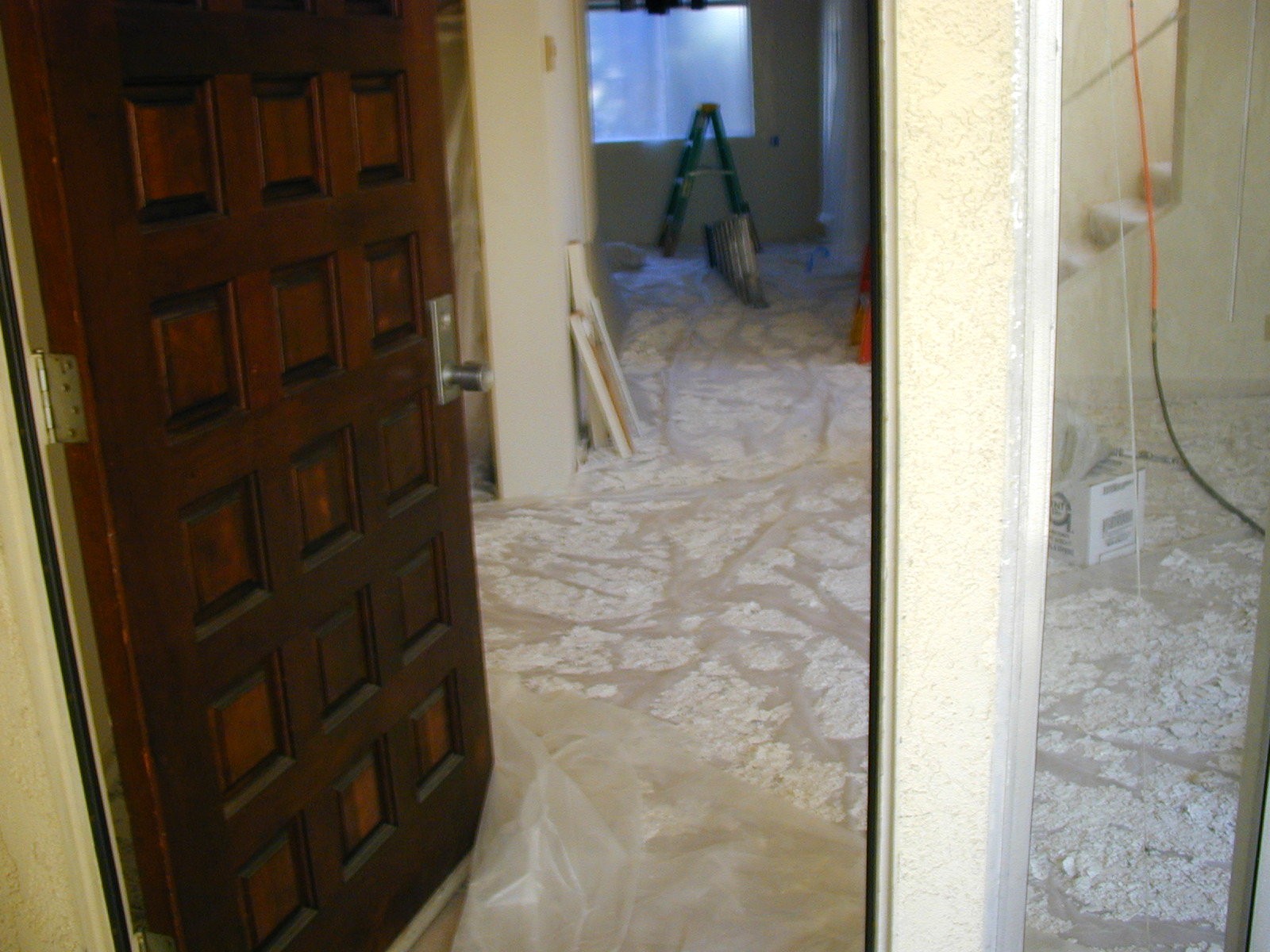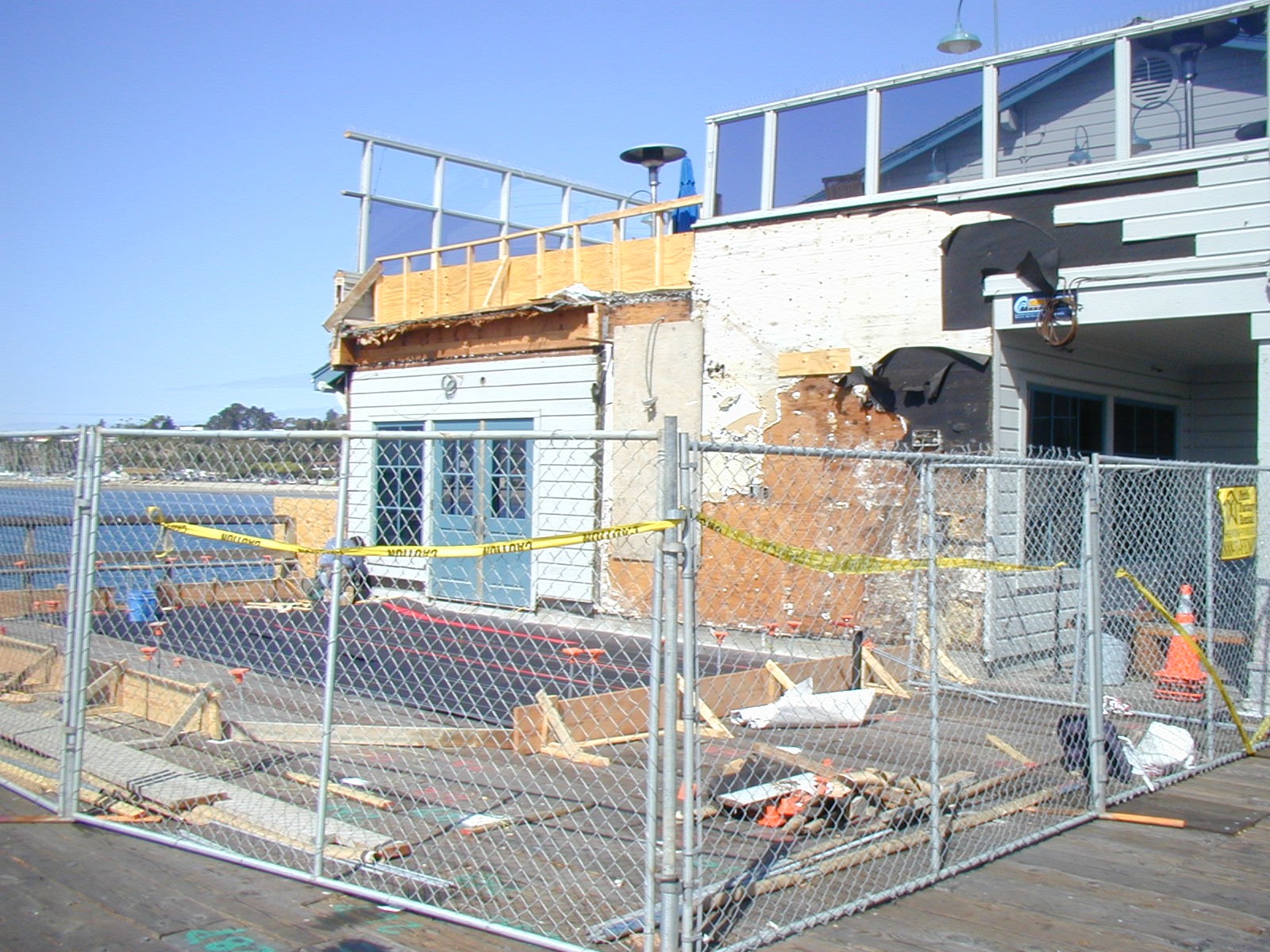Due to the COVID-19 pandemic, the District is requesting that completed and signed asbestos notifications be scanned and emailed to [email protected].
Advisories
- 07/01/23: Fee Update for Form ENF-28
What Home and Building Owners Should Know:
- Commonly Asked Questions about the Asbestos NESHAP
- Lists of local asbestos contractors, consultants, and laboratories
- Asbestos Air Toxic Control Measures (ATCMs)
- Cleanup of Structures Damaged by Flooding and Fire
Compliance Forms
- Notification for Renovation and Demolition Form ENF-28
- Exemption from Notification for Renovation and Demolition Form ENF-28e
- Project clearance form signoff needed? Please review this section of our FAQ
- Please submit forms to [email protected]
On This Page
- Introduction
- What Is Regulated Asbestos-Containing Material?
- When Is Asbestos Considered Dangerous?
- How Do I Know If My Home or Building Contains Asbestos?
- Who May Remove Asbestos-Containing Material From My Building or Home?
- When Does The Law Require Me to Have My Building Or Home Surveyed For Asbestos?
- When Does The Law Require Removal Of Asbestos-Containing Material?
- In Case Of Fire
- How Does the Air Pollution Control District Regulate Asbestos?
- Complaints or Concerns
- For Further Information on Asbestos
See Also
Introduction
 Asbestos is a term used to describe several types of naturally- occurring fibrous minerals found in many parts of California. There are several types of asbestos fibers, all of which are lightweight, fire-resistant and not easily destroyed by natural processes. Because of these characteristics, asbestos was regularly used in construction and thermal insulation until about 1979. However, when broken or crushed, asbestos becomes airborne and may stay in the air for long periods of time.
Asbestos is a term used to describe several types of naturally- occurring fibrous minerals found in many parts of California. There are several types of asbestos fibers, all of which are lightweight, fire-resistant and not easily destroyed by natural processes. Because of these characteristics, asbestos was regularly used in construction and thermal insulation until about 1979. However, when broken or crushed, asbestos becomes airborne and may stay in the air for long periods of time.
Asbestos products can still be purchased (roofing sealant and tile cement, for example) but it is not as prevalent.
What Is Regulated Asbestos-Containing Material?
Regulated Asbestos-Containing Material (RACM) is any material that contains greater than 1% asbestos and is friable. Friable means it can be crumbled, pulverized, or reduced to powder by hand pressure when dry. Some common examples of RACM are spray acoustic ceilings, acoustic tiles, various plasters, duct wrap, paper backing of linoleum, non-bituminous roofing felt, wallboard, joint compound (joint “mud”), and thermal insulation on pipes and boilers. Use of asbestos in the manufacturing of these products was banned by 1978. However, some products remained on the shelf and were used in the construction of buildings and homes for several years thereafter, and some are still used today.
Non-friable asbestos-containing material (ACM) is typically bound up with cement, vinyl, asphalt, or some other type of hardening binder. Some examples of non-friable asbestos building products are transite (cement) siding, vinyl asbestos floor tiles, and asphalt roofing shingles. Non-friable materials are not regulated. Some non-friable asbestos materials are still being manufactured. Note: non-friable ACM can become RACM if it is pulverized or turned to dust during remodel and/or repair activities. Non-friable ACM can also become RACM if it is burned.
When Is Asbestos Considered Dangerous?
When disturbed, friable RACM asbestos crumbles into a dust of microscopic fibers which can remain in the air for long periods of time. If inhaled, they pose a serious health threat as asbestos fibers can become permanently lodged in body tissues.
Symptoms of asbestos related diseases generally do not appear for 20 years or longer after the first exposure. Exposure to asbestos has been shown to cause cancer and asbestosis, which is a chronic disease of the lungs with symptoms similar to emphysema.
Since there is no known safe level of exposure, all asbestos exposure should be avoided. This is particularly important when removing asbestos insulation.
How Do I Know If My Home or Building Contains Asbestos?

Many building materials can contain asbestos. If you suspect a material contains asbestos, you can hire an asbestos consultant to survey and take samples of the materials, or you can take a sample to an asbestos laboratory yourself. The consultant surveys your home, using a systematic approach to identify all suspected materials.
If you choose to sample the material yourself, first wet the material using a water mister. After the material is penetrated by water, carefully remove it and place it in a clean container, such as a zip-lock sandwich bag (it must seal leak-tight). Take or send the sample(s) to an asbestos laboratory for analysis. To locate a consultant or laboratory, see the lists at the end of this document, or look in the yellow pages under “Asbestos” or “Environmental.”
If your samples are identified as containing asbestos and the subject materials in your home are in good condition, the Air Pollution Control District (District) recommends that it be left alone and managed to avoid damage and potential fiber release. If the asbestos-containing material RACM is damaged, or if the building or home is being renovated, repaired or remodeled and the activity will disturb the asbestos-containing material, then a licensed asbestos abatement contractor should be hired to properly remove the material in a safe and legal manner.
Who may remove asbestos-containing material from my building or home?
The District recommends using a licensed asbestos removal contractor who knows the legal requirements and has the trained staff and equipment to do the job properly for all asbestos removal. Such contractors are in the yellow pages under “Asbestos.” The Contractors State License Board has prepared a booklet titled “What You Should Know Before You Hire a Contractor.” The District has several booklets available on asbestos. Free copies are available for your use. If you hire a contractor, always remember to check their license.
Do not dust, sweep, or vacuum particles suspected of containing asbestos. This will disturb tiny asbestos fibers and may make them airborne. The fibers are so small that they cannot be seen, and will pass through normal vacuum cleaner filters and re-enter the air. Certified asbestos workers use specially designed vacuum cleaners and other procedures to remove asbestos dust.
When does the law require me to have my building or home surveyed for asbestos?
Your structure must be surveyed before you can obtain a demolition permit, and any regulated asbestos-containing material RACM must be properly removed by a licensed asbestos contractor before demolition begins. Remodeling and repair work also require that an asbestos survey be completed if RACM is to be disturbed.
If an asbestos survey indicates the presence RACM, or if you have knowledge that asbestos exists in the structure, this fact must be disclosed to the buyer in the real estate transfer disclosure statement when you sell your property.
When does the law require removal of asbestos-containing material?
If the building or home is being demolished, then all RACM must be removed by a licensed asbestos contractor prior to demolition. If the building or home is being renovated and the renovation may disturb RACM, then the material in the area undergoing renovation must be removed by a licensed asbestos contractor prior to renovation.
In Case of Fire
 Fire will not destroy microscopic asbestos particles. If your home burns down or sustains major fire damage, and was constructed before 1978, you should take special precautions. Sifting through the rubble after a fire may expose you to asbestos fibers. Respirators with special asbestos filters should be obtained from a safety supplies store to protect you during this task.
Fire will not destroy microscopic asbestos particles. If your home burns down or sustains major fire damage, and was constructed before 1978, you should take special precautions. Sifting through the rubble after a fire may expose you to asbestos fibers. Respirators with special asbestos filters should be obtained from a safety supplies store to protect you during this task.
Dust created by removing rubble from the site may cause your neighbors to be exposed to asbestos. Wetting down the rubble before disposal will help to reduce this exposure.
If you are demolishing a home or building by burning it down, you must follow the asbestos demolition and renovation reporting requirements. Contact the District regarding these requirements.
How Does the District Regulate Asbestos?
To control emissions of asbestos to the atmosphere, the District enforces Federal laws which control work practices during the demolition and renovation of institutional, commercial, or industrial structures, excluding private residences and apartment buildings having no more than four dwelling units. Depending upon the amount and type of asbestos and the type of project, advance notification to the District may be required before asbestos is disturbed and/or removed. Notification requirements may also include notifying local residents and occupants of buildings where asbestos abatement is being done. To find out more about who should be notified, call the District at (805) 979-8050. Landfills receiving waste from these operations are also subject to regulation by the District.
In Santa Barbara County, Conditionally Exempt Small Quantity Generators (CESQG’s) may qualify to dispose of small amounts of asbestos materials at the Community Hazardous Waste Collection Center (CHWCC) at UCSB. Contact the County of Santa Barbara’s Public Works Department at (805) 882-3602 for more information on disposal requirements and possible fees, or see their website at www.lessismore.org/Programs/hshold_hazwaste_cmplte.html.
The general public can pick up asbestos bags from the County Public Works Department as well. Bags may also be picked up at the CHWCC during operating hours.
In the City of Lompoc, non-friable asbestos may be disposed of (for a fee) at the sanitary landfill. Please call one day in advance.
Friable asbestos may be disposed of at the City’s Household Hazardous Waste Collection Facility. A fee of $2.50 per pound will be charged to Conditionally Exempt Small Quantity Generators. You must call ahead to make an appointment at 736-1261 Ext. 8024.
Complaints or Concerns?
Contact the District if any of the following situations occur:
- You suspect you are being exposed to asbestos fibers.
- You observe dust emissions from a construction project involving asbestos renovation or demolition.
- You know about, or observe, improper removal or disposal of asbestos-containing materials.
For Further Information on Asbestos:
| For Information on | Contact | Phone / Email / Website |
| Work practice and notification requirements | Santa Barbara County Air Pollution Control District | (805) 979-8050 |
| Worker safety | CAL OSHA – California Division of Occupational Safety and Health, Asbestos Unit | www.dir.ca.gov/DOSH/asbestos.html |
| Asbestos Contractor certification | CAL OSHA – California Division of Occupational Safety and Health, Asbestos Unit | (415) 703-5191 |
| Asbestos Consultant certification | CAL OSHA – California Division of Occupational Safety and Health, Asbestos Unit | (916) 574-2993 |
| Contractor licensing issues | Contractors State Licensing Board | (916) 366-51531 or (800) 321-2752 or www.cslb.ca.gov |
Related Websites
- California Air Resources Board www.arb.ca.gov/toxics/asbestos/asbestos.htm
- US Environmental Protection Agency http://www.epa.gov/asbestos
- American Lung Association http://www.lung.org/our-initiatives/healthy-air/indoor/indoor-air-pollutants/asbestos.html
- Ventura County Air Pollution Control District www.vcapcd.org/asbestos.htm
- Agency for Toxic Substances and Disease Registry – information on health effects: www.atsdr.cdc.gov/asbestos/asbestos/health_effects/index.html
Additional information available includes:
- Informational Fact Sheets (request from the District)
- Federal Asbestos NESHAP Regulations (request from the District)
- Commonly asked questions about the Asbestos NESHAP
- List of local asbestos contractors (PDF) Asbcontract.pdf
- List of local asbestos consultants (PDF) Asbconsult.pdf
- List of testing laboratories (PDF) asblabs.pdf
- Information from the National Institute of Standards and Technology (NIST), including a list of National Voluntary Laboratory Accreditation Program (NVLAP) accredited laboratories for asbestos fiber analysis (PLM Test Method): http://www.nist.gov/nvlap/asb-lap.cfm
- Air Pollution Control District Rules
- Updated Building Department Information
For more information or assistance contact the District via email [email protected].

